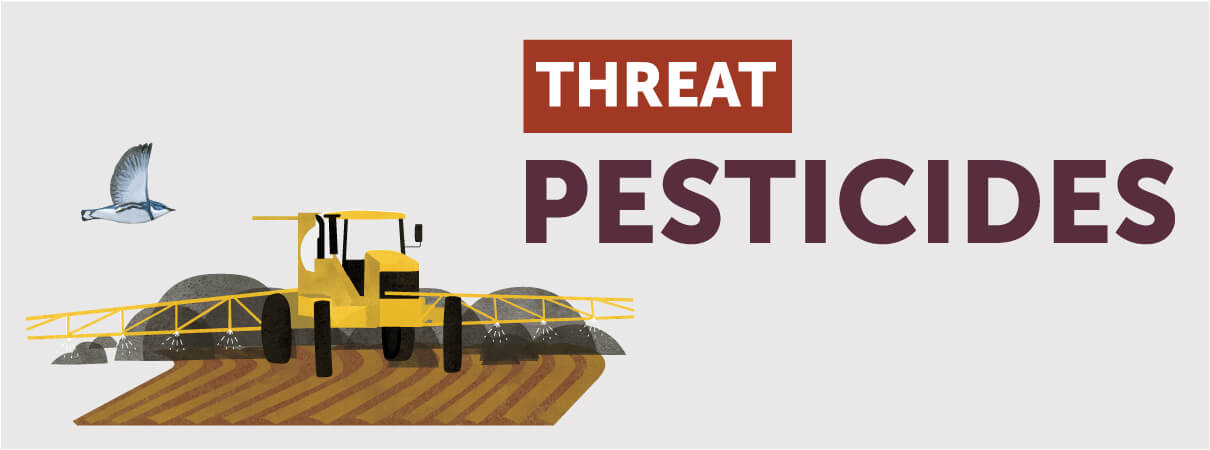Meet Elmer, One Smart, Lucky Cerulean Warbler
Migration is big. Especially when you're a tiny Cerulean Warbler.
This species' epic journey was tracked for the first time this past spring, when 19 Cerulean Warblers were outfitted with high-tech backpacks capturing essential data about the birds' migration route.

Elmer traveled thousands of miles, from Colombia to Pennsylvania.
We now know that over a period of six weeks, one of these warblers—dubbed "Elmer" by researchers—traveled thousands of miles. He flew from his Colombian wintering grounds all the way back to his namesake elm tree in Pennsylvania, where he had nested the year before.
Gauntlet of Threats
Elmer is smart, or lucky, or both. Many Cerulean Warblers and other migratory birds fail to reach the finish line of their migratory race. These birds become casualties of a changing landscape that presents new risks each year.
But not Elmer. This intrepid bird survived the gauntlet of threats, from deforestation in Colombia to pesticide use in Pennsylvania.
As a result, we now know much more about the places that must be conserved to reverse the decline of the Cerulean Warbler—a species that has seen a 70 percent reduction in population over the past 50 years.
Here's a look at this tiny bird's journey and the obstacles he overcame:

Forests in Colombia (and around the world) are under threat.
Elmer spent the winter in the forests of Colombia, the destination for a large percentage of Cerulean Warblers. Forests here are under threat, with some 200,000 hectares lost each year—that's an area greater than 200,000 football fields destroyed annually.
Our bird was fortunate this year. Urgent action is needed to conserve habitat for future generations of Ceruleans, which will be guided by instinct and the moon and stars to wintering grounds that have supported their species for millennia.

Deforested lands and depleted soils fail to support people (and wildlife).
On March 20, Elmer took off on his journey north. He touched down in Guatemala, where he spent three weeks fattening up for his trip across the Gulf of Mexico. Our bird found enough to eat, but not all are so lucky. Across Guatemala, families try to make a living from the land, growing crops like corn and beans in desperate conditions.
Deforested lands and depleted soils fail to support the people—and the habitats needed by migratory birds.

A less obvious threat, lights can be deadly to birds.
Continuing onward, Elmer flew straight across the Gulf of Mexico. He successfully avoided the 2,500+ oil and gas platforms that ring the Gulf, which are lit up at night like Christmas lights as a warning to boats and aircraft.
Especially in bad weather, birds become attracted to the lights and may circle them for hours, depleting the energy they need to complete the journey.

Millions of birds are killed when they hit windows each year.
Refueling in central Tennessee, Elmer bypassed the attraction of big cities and their tall, reflective buildings that confound migratory birds. He flew over smaller towns and suburbs, where the windows of each of the thousands of homes likely claim at least one or two birds annually.
Unfortunately, millions of birds needlessly die each year when they hit windows in the United States.

Cats are great pets, but collectively, they kill billions of birds in the U.S. annually.
During his stopover in Tennessee, he also managed to avoid free-roaming cats. Domestic cats now number well over 100 million in the United States.
Although they make wonderful pets, studies show that free-roaming cats kill about 2.4 billion birds every year in the U.S. alone. Mounting evidence suggests that cats reduce local bird populations and cause a substantial proportion of total wildlife mortality.

Pesticides like neonicotinoids are less visible than some other threats, but no less deadly.
Finally, back in Pennsylvania, Elmer (and all kinds of other birds and wildlife) runs the risk of encountering deadly pesticides like neonicotinoids.
Used in agricultural fields and home gardens alike, neonicotinoids are now the most widely used insecticides on Earth. Our research shows that these substances are toxic not only to bees, as has been widely reported, but to birds as well.
So far, none of these threats have slowed Elmer down. Against the odds, he arrived back on his breeding grounds in May, right on schedule. What did he do first? Find his elm tree and sing, of course!
Keep Elmer Singing
With your support, we can reduce these threats and protect the places that migratory birds like Elmer need. Click here to donate.
Editor's Note: We gratefully acknowledge our partners in the effort to map Cerulean Warbler migration. The Cerulean Warbler Geolocation Study is a collaboration of the University of Tennessee, Arkansas State University, Indiana University of Pennsylvania, and the USDA Forest Service – Northern Research Station.


















































